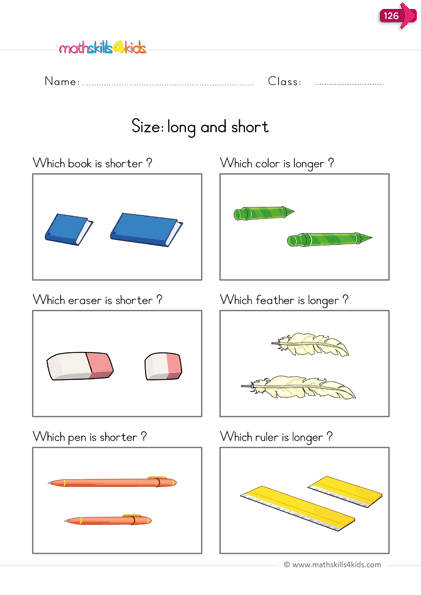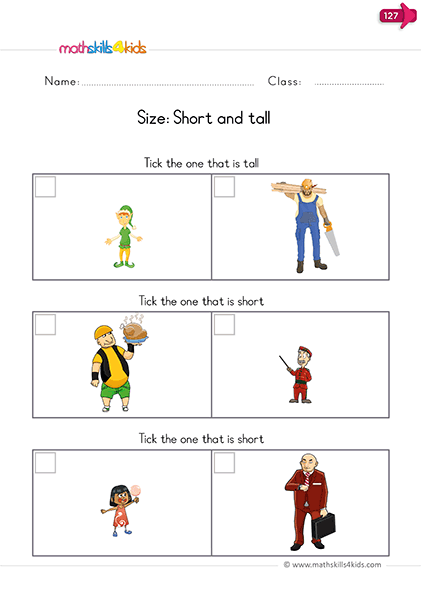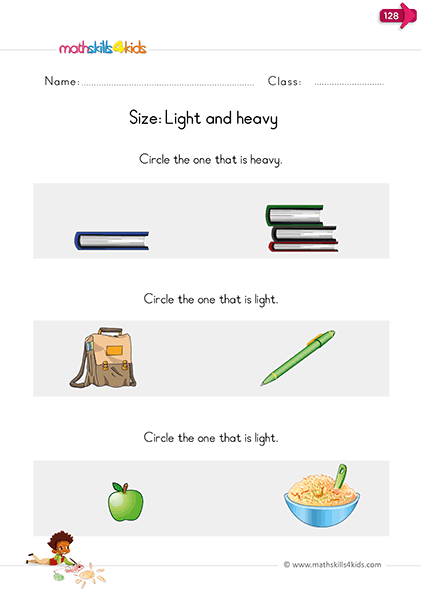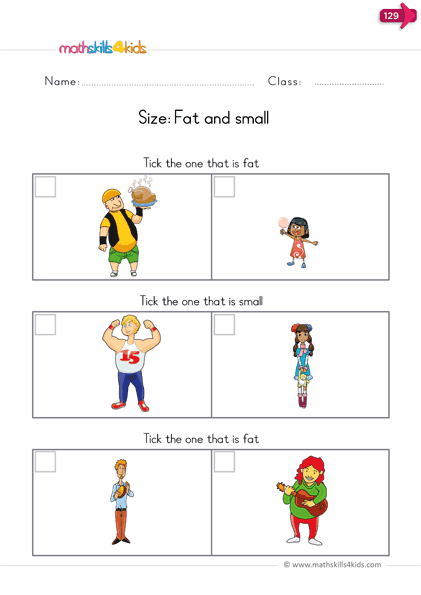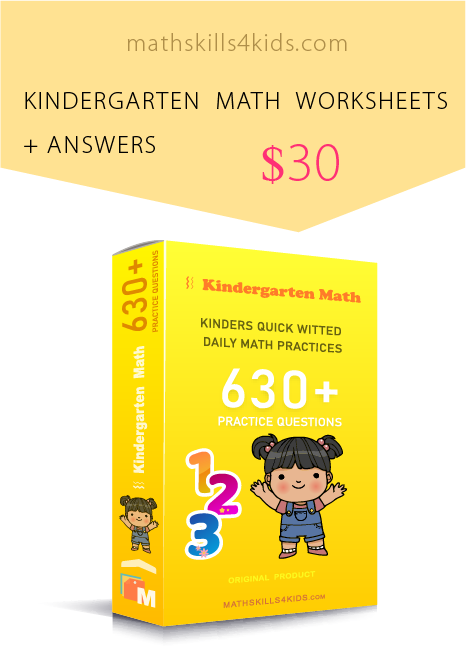Free measurement worksheets for kindergarten
Hi everyone! Welcome to this amazing resource, where we'll share with you everything you need to know about measurement. To ensure a positive and enjoyable learning experience, we have designed the best fun and free measurement worksheets for your kindergarten students.
-
Measurement is the process of finding out how big, small, heavy, light or full something is. It is a very useful skill that we need for many things in life, such as cooking, shopping, building, and more.
In this article, we'll provide a combination of fun pictures and colorful designs that will enhance kids' eagerness to learn and practice this important concept.
Why measurement matters
Measurement matters because it helps us describe and compare the world around us. For example, we can use measurements to tell how tall we are, how much water we drink, how far we travel, and so on.
Measurement also helps us solve problems and make decisions. For example, we can use measurement to figure out how much food we need for a party, how many books we can fit on a shelf, how long it will take us to get somewhere, and so on.
Moreover, measurement is a key part of math and science. We use measurement to collect data, make graphs, conduct experiments, and test hypotheses.
-
BROWSE THE WEBSITE
-
DOWNLOAD FREE WORKSHEETS
-
-
K- MATH TOPICS
- Learn to count up to 3
- Counting from 1 to 5
- Count up to 10
- Learn to count up to 20
- Counting to 100
- Skip counting
- Measurement
- Sum and difference
- Comparison
- Patterns
- Addition up to 5
- Addition up to 10
- Subtraction up to 5
- Subtraction up to 10
- 2D shapes
- Introduction to symmetry
- Position
- Fractions
- Time
- Classify
- Data and graph
- Probability
- 3D shapes
-
-
Fun and easy ways to measure
Using fun and easy ways to teach measurement is a great strategy to introduce the concept to your kids, build on their understanding and get them interested in learning the concept more.
You can use objects that they are familiar with and that they can manipulate. For example, you can use paper clips, pencils, hands, feet, spoons, cups, etc., to measure different things.
This way, kids can see and feel the differences in size and quantity. Here are some examples of how to measure with everyday objects:
- To measure length or height, you can use paper clips or pencils and line them up along the edge of the object. Count how many paper clips or pencils you need to cover the whole length or height. For example, you can measure how long your desk is by using paper clips.
- To measure weight, you can use your hands or a balance scale and compare the heaviness of different objects. Hold one object in each hand and feel which one is heavier or lighter. Or use a balance scale and see which side goes down or up when you put different objects on it. For example, you can measure how heavy your backpack is by using your hands.
- To measure capacity or volume, you can use spoons or cups and fill them with water or other liquids. Count how many spoons or cups you need to fill up a container or an empty bottle. For example, you can measure how much juice you drink by using spoons.
-
Comparing and ordering by size
Another essential skill that kids need to learn is how to compare and order objects by their size. This means using measuring words like longer, shorter, taller, shorter, heavier, lighter, more, less, etc., to describe the relationship between two or more objects.
For example:
- To compare length or height, you can use words like longer or shorter. For example: The pencil is longer than the eraser. The book is shorter than the ruler.
- To compare weight, you can use words like heavier or lighter. For example: The apple is heavier than the banana. The feather is lighter than the rock.
- To compare capacity or volume, you can use words like more or less. For example: The cup has more water than the glass. The bottle has less milk than the jug.
To order objects by their size, you can use words like longest or shortest (for length or height), heaviest or lightest (for weight), most or least (for capacity or volume). For example:
- To order objects by length or height from longest to shortest: The snake is the longest animal. The lizard is shorter than the snake but longer than the worm. The worm is the shortest animal.
- To order objects by weight from heaviest to lightest: The elephant is the heaviest animal. The lion is lighter than the elephant but heavier than the monkey. The monkey is lighter than the lion but heavier than the bird. The bird is the lightest animal.
- To order objects by capacity or volume from most to least: The bathtub has the most water. The bucket has less water than the bathtub but more than the bowl. The bowl has less water than the bucket but more than the cup. The cup has the least water.
-
Practice makes perfect
Now that you know what measurement is and how to do it with different objects, it's time to practice! There is a saying that "practice makes perfect," right? So you need to practice constantly.
We have prepared some free measurement worksheets for kindergarten students that you can download and print from the MathSkills4Kids website (link below each image). These worksheets will help your kids practice measuring using everyday objects.
They will also help them compare and order objects by their size using words like longer, shorter, heavier, lighter, more, and less.
Bonus: More resources for measurement activities
-
22 Measurement Activities for Kids at Home or in the Classroom | Proud to be Primary :
https://www.myteachingcupboard.com/blog/hands-on-measurement-activities-for-kindergarten/If you are looking for some fun and engaging ways to teach measurement to your kindergarten students, you will love this website page! It has 9 amazing hands-on measurement activities that cover topics such as length, height, weight, capacity, and time.
You will find printable prompts, colorful photos, and helpful tips to make your lessons easy and enjoyable. Your students will love exploring and comparing different objects using rulers, scales, cups, and clocks.
These activities are perfect for developing their math skills and vocabulary in a playful way. Check out this website page and get ready to measure up! -
9 Fun Hands-on Measurement Activities for Kindergarten | My Teaching Cupboard :
https://proudtobeprimary.com/measurement-activities/This website page is about 22 measurement activities for kids at home or in the classroom. It is written by Proud to be Primary, a website that offers and supports primary teachers with creative ideas and engaging resources.
The page explains how measurement is an important math skill that everyone needs to know and how it can be taught in different grade levels using fun and hands-on ways. The page also provides examples of measurement activities using rulers, non-standard units, and different items.
The page is colorful and attractive, with many pictures and links to other resources. The page is informative and helpful for anyone who wants to learn or teach measurement in a fun way.
Thank you for sharing the links of MathSkills4Kids.com with your loved ones. Your choice is greatly appreciated.
Measurement is a fun and useful skill that kids will need throughout their lives.
So let's get measuring!
-
